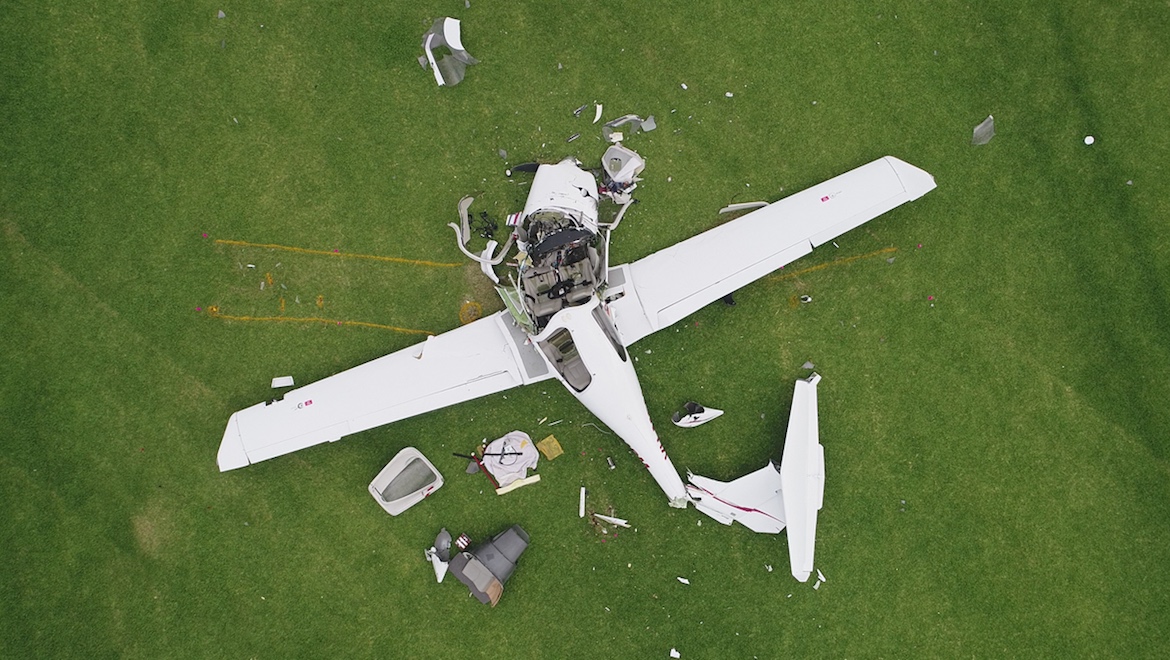
The Australian Transport Safety Bureau (ATSB) has issued a safety advisory calling on flight training organisations to clarify with aircraft manufacturers whether their aircraft are approved for intentional spins following a fatal Queensland crash.
An instructor pilot from Aircrew Training and Support Pty Ltd and a student were killed in a Diamond DA40 aircraft on September 26 2017 during advanced stall recovery training for the student’s upcoming recreational pilot licence. The aircraft made a near vertical descent, crashing nose first into a farm at Allenview after taking off from Archerfield Airport, 12 kilometres southwest of Brisbane.
The ATSB advisory, issued on Wednesday, warned that some training organisations might be conducting incipient spin training (the early stage of a spin) in aircraft not approved for intentional spinning.
It said depending on aircraft type, a manufacturer may not have specified whether the restriction applied to an incipient spin or only a developed spin.
The ATSB said that while the Diamond DA40 flight manual outlined limitations prohibiting intentional spins, the manufacturer said this was also intended to include incipient spins.
The incipient spin manoeuvre was, however, not defined and some operators considered that an incipient spin was not an intentional spin.
The ATSB noted the Civil Aviation Safety Authority (CASA) “requires the demonstration of recovery from an incipient spin during flight tests”.
“However, there is no clear and consistent definition of the point at which a manoeuvre becomes a spin (or incipient spin) for the purposes of flying training,” the ATSB safety advisory said.
Instead, the ATSB recommended training instructors seek “valuable guidance” in the New Zealand Civil Aviation Authority’s (CAA) booklet Spin, Avoidance and Recovery.
During the crash investigation, the ATSB found a hand-written note in the cockpit of the Diamond DA40 outlining the training sequence by the instructor for the student. The note indicated that the sequences up to and including stalls had been completed. Advanced stall recovery training was next on the list.
This procedure required a student to demonstrate recovery from incipient spins and stalls conducted with different engine power settings, aircraft configurations and entry attitudes.
Slow recovery action or mishandling during the incipient spin recovery may lead to an aircraft entering a developed spin, the ATSB said in its final report on the September 26 2017 accident.
The instructor and trainee pilot could not or did not recover from the spin before the plane crashed, despite there being sufficient height to do so, the final report said.
” . . . the aircraft is in a sp . . . ,” the instructor was last heard saying before the recorded transmission ended and the plane crashed.
The ATSB assessed that the instructor’s incipient spin recovery knowledge was consistent with established guidelines and did not contribute to the accident.
It has urged operators to “beef up their skills and procedures so they can avoid unintentional spins and recovery”.
The final report can be read in full on the ATSB website. Meanwhile, the ATSB safety advisory can be found here.
The Spin, Avoidance and Recovery booklet is on the New Zealand CAA website.












